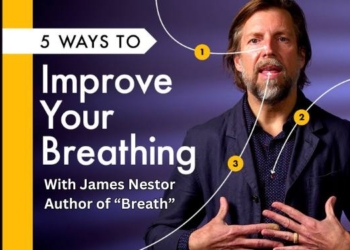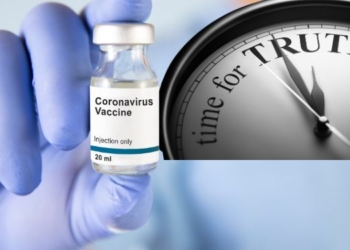
By Dr. Joseph Mercola | mercola.com
STORY AT-A-GLANCE
- A 2017 study found that women with active sun exposure habits have a lower mortality rate than those who avoid it, and a 2014 study showed that the death rate among sun avoiders was double that of the highest sun exposure group
- Smokers reporting the highest sun exposure were found to have a similar risk for developing heart disease and noncancer/nonheart disease as nonsmokers
- The increased risks of heart problems and cancer aren’t the only potential problems caused by lack of sun exposure; specific cancers, diabetes, multiple sclerosis, autism, Alzheimer’s disease, and age-related macular degeneration may also be related
- Multiple studies indicate that hazardous ingredients in sunscreen, such as oxybenzone, can cause infertility, birth defects and hormone disruption in children, and even destroy the coral reefs
With the coming of spring and summer, you don't have to look very far to find “experts” insisting that if you plan to spend any time outdoors, you should limit your sun exposure as much as possible. Many doctors advise their patients to cover up or slather themselves with sunscreen.
The warnings aren't just for perpetual sun worshipers, but for people who are just going about their daily activities, such as walking to and from their cars, mowing the lawn or hanging their elbows out the window while driving.
With all the cautions about it being the leading cause of skin cancer, not to mention wrinkles and premature aging, you might think fair-skinned people from Sweden would avoid the sun like the plague. But scientists in Sweden conducted a study revealing that it's sun avoidance that's statistically more liable to kill people, not the other way around.
The study, published in Journal of Internal Medicine,1 asserts that women, specifically, who make it a habit to expose themselves to sunlight for a limited amount of time per day have a lower mortality rate than those who avoid it.
A caveat is in order, however: Anyone who gets too much sun has a higher risk of developing skin problems, including cancer. Getting a serious sunburn is as unwise as it ever was, but the fact is, you need daily sun exposure to stay healthy.
To reflect this, scientists have recently asked public health entities to do an “about face” on their previous (and erroneous) stance that sun exposure is unhealthy and, further, to emphasize that moderate but consistent amounts of sun are healthy.
‘D' Isn't Really a Vitamin; They Gave It the Wrong Name
If you ever wondered why other vitamins are derived from the foods you eat, but what you know as vitamin D comes from the sun, you were on the right track. According to the Endocrine Society's Hormone Health Network, the “vitamin D” designation is a misnomer:
“This often-misunderstood ‘vitamin' is not a vitamin — it is a prohormone. Prohormones are substances that the body converts to a hormone. In fact, unlike other vitamins, only about 10 percent of the vitamin D the body needs comes from food (such as dairy products and oily fish), and the rest the body makes for itself.”2
Your body makes vitamin D in a chemical reaction when sunlight hits your skin. It works by binding to a protein called the vitamin D receptor, which is present in nearly every cell and affects many different body processes. It helps your body absorb calcium, which in turn enables your bones to gain strength by “mineralizing” them.
Research indicates that the best way to raise your vitamin D level is not through supplementation but through sun exposure. It's crucial for the public to understand that the latest science shows that the real risk is avoiding the sun. But perhaps understanding the problems associated with low vitamin D is a more effective way of communicating how important getting optimal sun exposure is. The top five signs are:
- Constant aches and pains, which are frequently misdiagnosed
- Frequent illnesses and infections due to a low immune system
- Neurological symptoms from headaches to cognitive impairment
- Fatigue, daytime sleepiness, and low back pain
- Sweaty head, often seen in infants, but can occur at any age
In 2018, the International Journal of Environmental Research and Public Health3 noted that the risk of heart problems and cancer aren't the only potential problems. Lack of sun exposure is also linked to specific cancers, diabetes, multiple sclerosis, autism, Alzheimer's disease, and age-related macular degeneration.
Contrary to the present narrative, ultraviolet (UV) light is the primary source of vitamin D, as well as other compounds crucial for your health. The authors concluded that “non-burning UV exposure is a health benefit and — in moderation — should be recommended as such.”4
The Risk Factor for Sun Exposure
Researchers wanted to explore the risk factor for all-cause mortality by comparing women, depending on the differences in their sun exposure as a 20-year follow-up of the Melanoma in Southern Sweden (MISS) cohort.5
Recruited between 1990 and 1992, 29,518 Swedish-born women between the ages of 25 and 64 years of age and with no history of cancer supplied detailed information regarding their sun exposure habits, as well as “potential confounders” such as marital status, education level, alcohol consumption, disposable income and number of births.
In 2000, physical exercise and individual body mass index (BMI) was added to the questionnaire. However, there may be a link between BMI and vitamin D levels, as one study noted that a higher BMI leads to lower vitamin D levels.6
People with a high BMI also don't get the same increase in vitamin D levels by UV radiation as lean subjects do.7 Four questions supplied the basis for the study, with options for frequency, including “never”:
- How often do you sunbathe during the summertime?
- Do you sunbathe during the winter, such as on vacation to the mountains?
- Do you use tanning beds?
- Do you go abroad on vacation to swim and sunbathe?
Which Is Worse — Avoiding Sunlight or Vitamin D Deficiency?
Scientists and members of the health community call it an ongoing debate, the question of whether avoiding sunlight is worse for you than having a vitamin D deficiency. According to the featured study, they looked at two reviews in regard to the importance and impact of vitamin D, and they came to polar opposite conclusions.
One review asserted that the “highly convincing evidence of a clear role of vitamin D does not exist for any outcome,”8 while the second review showed the risk of death was comparable to the risks expected by people who were smokers.9
While studies on sun exposure are limited, a 2014 study in the Journal of Internal Medicine reported, “The mortality rate amongst avoiders of sun exposure was approximately twofold higher compared with the highest sun exposure group.”10
For every skin cancer death in northern Europe, 60 to 100 people die from stroke or heart disease related to high blood pressure, which is strongly associated with vitamin D deficiency, and a lack of sun exposure in particular.11 Further, a 2016 study observed:
“Epidemiological and observational data thus suggests that sunlight exposure can reduce all-cause mortality, and has particular benefits on hypertension and cardiovascular disease. These benefits are at the cost of increasing the risk of skin cancer incidence, although the overall benefits outweigh the risks as demonstrated by dose-dependent reductions in all-cause mortality with increased sun exposure.”12
How Does Lack of Sunlight Cause Cardiovascular Disease and/or Cancer?
The scientists noted that what causes the higher incidence of death among women who avoid sunlight — a relatively small subgroup of 5.8 percent — is unknown. They classified “mortality” into three categories: cardiovascular disease (CVD), cancer and noncancer/non‐CVD for the purpose of showing how sun exposure is related.
Interestingly, the researchers noted the women's smoking habits, but also created a “dummy variable” called comorbidity to measure another condition to identify whether the women had been treated with specific diabetes medication (which can lower vitamin D levels) or anticoagulant drugs for CVD for more than one month. According to the study:
“Women with active sun exposure habits were mainly at a lower risk of cardiovascular disease (CVD) and noncancer/non‐CVD death as compared to those who avoided sun exposure. As a result of their increased survival, the relative contribution of cancer death increased in these women.
Nonsmokers who avoided sun exposure had a life expectancy similar to smokers in the highest sun exposure group, indicating that avoidance of sun exposure is a risk factor for death of a similar magnitude as smoking. Compared to the highest sun exposure group, life expectancy of avoiders of sun exposure was reduced by 0.6–2.1 years.”13
It's important to note that exposure to sunlight also produces a number of other health benefits that are unrelated to vitamin D production. For instance, exposure to UV light increases T cell activity — white blood cells involved in immune function and fighting infections.14
The Relationship Between Sun Exposure and Skin Cancer
The researchers also noted that most studies analyzing the relationship between extreme sun exposure and skin cancer show an increased incidence, so it's hard to examine the impacts of sun exposure without considering skin cancer, which is typically divided into three groups:
- Basal cell carcinoma (BCC)
- Squamous cell carcinoma (SCC)
- Cutaneous melanoma MM
Basal cell and squamous cell carcinomas are generally grouped together and referred to as nonmelanoma skin cancer (NMSC) because of their similarity and because both are considered less threatening (nonfatal).
One study shows that squamous cell carcinoma usually relates to cumulative exposure to UV light, while UV light is the main risk factor of cutaneous melanoma due to excess exposure to sunlight and/or tanning beds. In addition, “Incidence of MM in Sweden has doubled during the last 15 years, whilst the mortality rate has been constant since (the) the 1980s.”15
Putting Sunscreen on Your Kids Is Safe, Right?
For several decades, the chemical industry has been providing sunscreens that can be “safely” used by both adults and children, but are they really safe? Multiple studies indicate that hazardous ingredients exist in sunscreen and can cause a number of serious and potentially life-altering conditions.
Not only are people encouraged to use sunscreen whenever they go out, but doctors also urge parents to use it on their children, which millions do as a matter of course, and to keep applying it throughout the day while they're swimming, golfing or visiting amusement parks.
As of late 2018, the U.S. Food & Drug Administration's list of chemicals used in sunscreens16manufactured as “drugs for human use” still contain numerous hazardous active ingredients, including as much as 6% oxybenzone, linked to degraded sperm quality in men17 and endometriosis in women.18
But that's not all. One study contends that oxybenzone may also cause Hirschsprung's disease, a condition that “affects the large intestine (colon) and causes problems with passing stool. The condition is present at birth (congenital) as a result of missing nerve cells in the muscles of the baby's colon.”19
“Researchers found that pregnant women with medium to high levels of oxybenzone in their urine had a higher chance of giving birth to a baby with Hirschsprung's Disease. Later testing of the human cell lines demonstrated that very low levels of oxybenzone have the ability to disrupt cell migration in a similar fashion as Hirschsprung's Disease.
The amount of oxybenzone to do this disruption would be easily found in the body after normal sunscreen use. This confirms that oxybenzone could very well be the hidden link behind this disease that has impacted so many lives in the United States.”20
Oxybenzone was referred to as an “ecologically threatening chemical” after it was found, along with octinoxate (up to 7.5% in some sunscreens21), another chemical, to damage coral reefs in places like Hawaii in amounts as small as the equivalent of one drop in 6.5 Olympic-sized swimming pools.”22Hawaii banned its use in 2018.23
In lieu of sunscreen, limit your initial sun exposure to just a few minutes and slowly work your way up. The more tanned your skin gets, the longer you can stay in the sun without burning. In addition, the powerful antioxidant astaxanthin can be used both internally and topically to protect your skin from the sun. Whenever possible, wear a wide-brimmed hat to protect your skin and eyes.
The bottom line is that if avoiding sun exposure puts your health at similar risk as smoking does, it's time to make a change. There's ample evidence to indicate that “catching some rays,” as well as avoiding chemical concoctions to block sunlight, is not just good for you; it's crucial for maintaining — or regaining — your health.
















